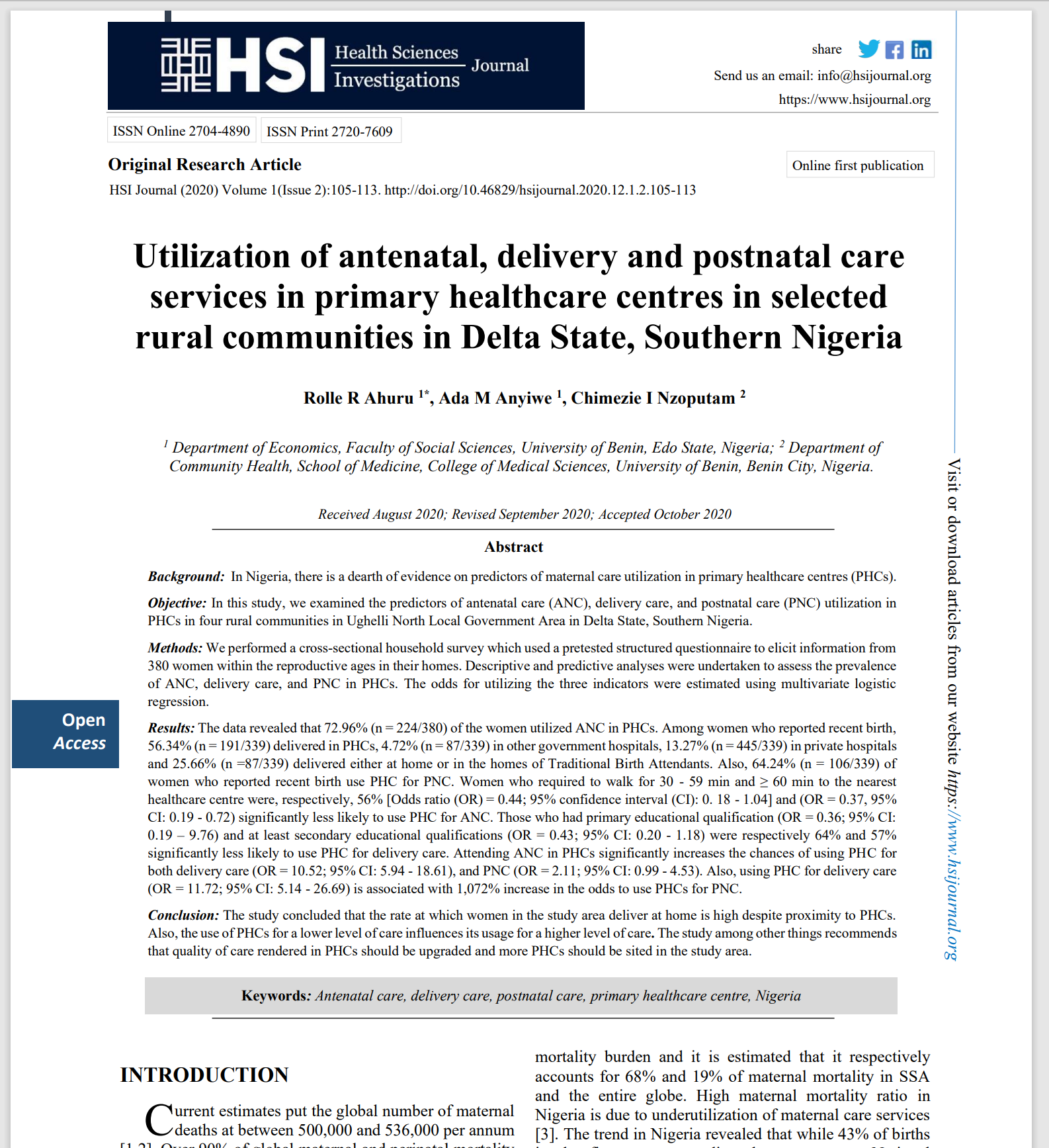Utilization of antenatal, delivery and postnatal care services in primary healthcare centres in rural communities in Delta State, Southern Nigeria.
Utilization of antenatal, delivery and postnatal care services in Southern Nigeria.
Abstract
Background: In Nigeria, there is a dearth of evidence on predictors of maternal care utilization in primary healthcare centres (PHCs).
Objective: In this study, we examined the predictors of antenatal care (ANC), delivery care, and postnatal care (PNC) utilization in PHCs in four rural communities in Ughelli North Local Government Area in Delta State, Southern Nigeria.
Methods: We performed a cross-sectional household survey which used a pretested structured questionnaire to elicit information from 380 women within the reproductive ages in their homes. Descriptive and predictive analyses were undertaken to assess the prevalence of ANC, delivery care, and PNC in PHCs. The odds for utilizing the three indicators were estimated using multivariate logistic regression.
Results: The data revealed that 72.96% (n = 224/380) of the women utilized ANC in PHCs. Among women who reported recent birth, 56.34% (n = 191/339) delivered in PHCs, 4.72% (n = 87/339) in other government hospitals, 13.27% (n = 445/339) in private hospitals and 25.66% (n =87/339) delivered either at home or in the homes of Traditional Birth Attendants. Also, 64.24% (n = 106/339) of women who reported recent birth use PHC for PNC. Women who required to walk for 30 - 59 min and ≥ 60 min to the nearest healthcare centre were, respectively, 56% [Odds ratio (OR) = 0.44; 95% confidence interval (CI): 0. 18 - 1.04] and (OR = 0.37, 95%
CI: 0.19 - 0.72) significantly less likely to use PHC for ANC. Those who had primary educational qualification (OR = 0.36; 95% CI: 0.19 – 9.76) and at least secondary educational qualifications (OR = 0.43; 95% CI: 0.20 - 1.18) were respectively 64% and 57% significantly less likely to use PHC for delivery care. Attending ANC in PHCs significantly increases the chances of using PHC for both delivery care (OR = 10.52; 95% CI: 5.94 - 18.61), and PNC (OR = 2.11; 95% CI: 0.99 - 4.53). Also, using PHC for delivery care (OR = 11.72; 95% CI: 5.14 - 26.69) is associated with 1,072% increase in the odds to use PHCs for PNC.
Conclusion: The study concluded that the rate at which women in the study area deliver at home is high despite proximity to PHCs. Also, the use of PHCs for a lower level of care influences its usage for a higher level of care. The study among other things recommends that quality of care rendered in PHCs should be upgraded and more PHCs should be sited in the study area.


